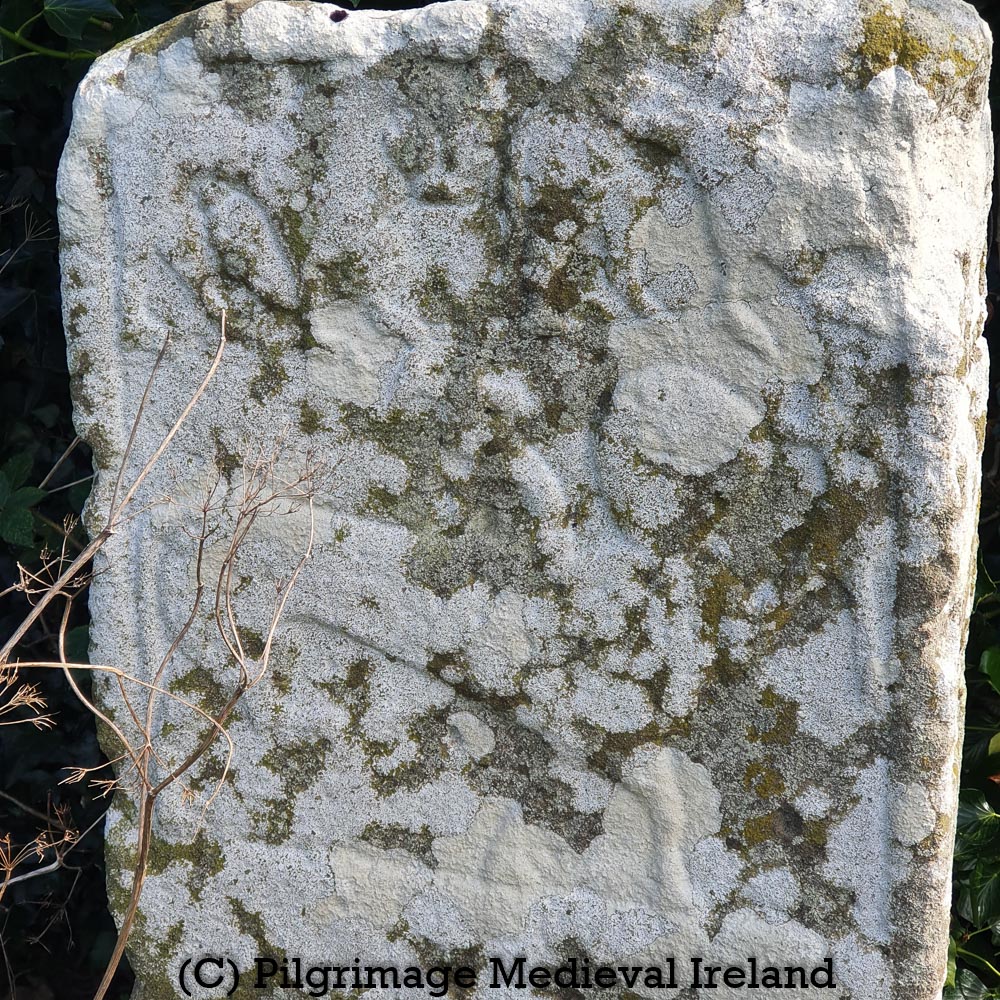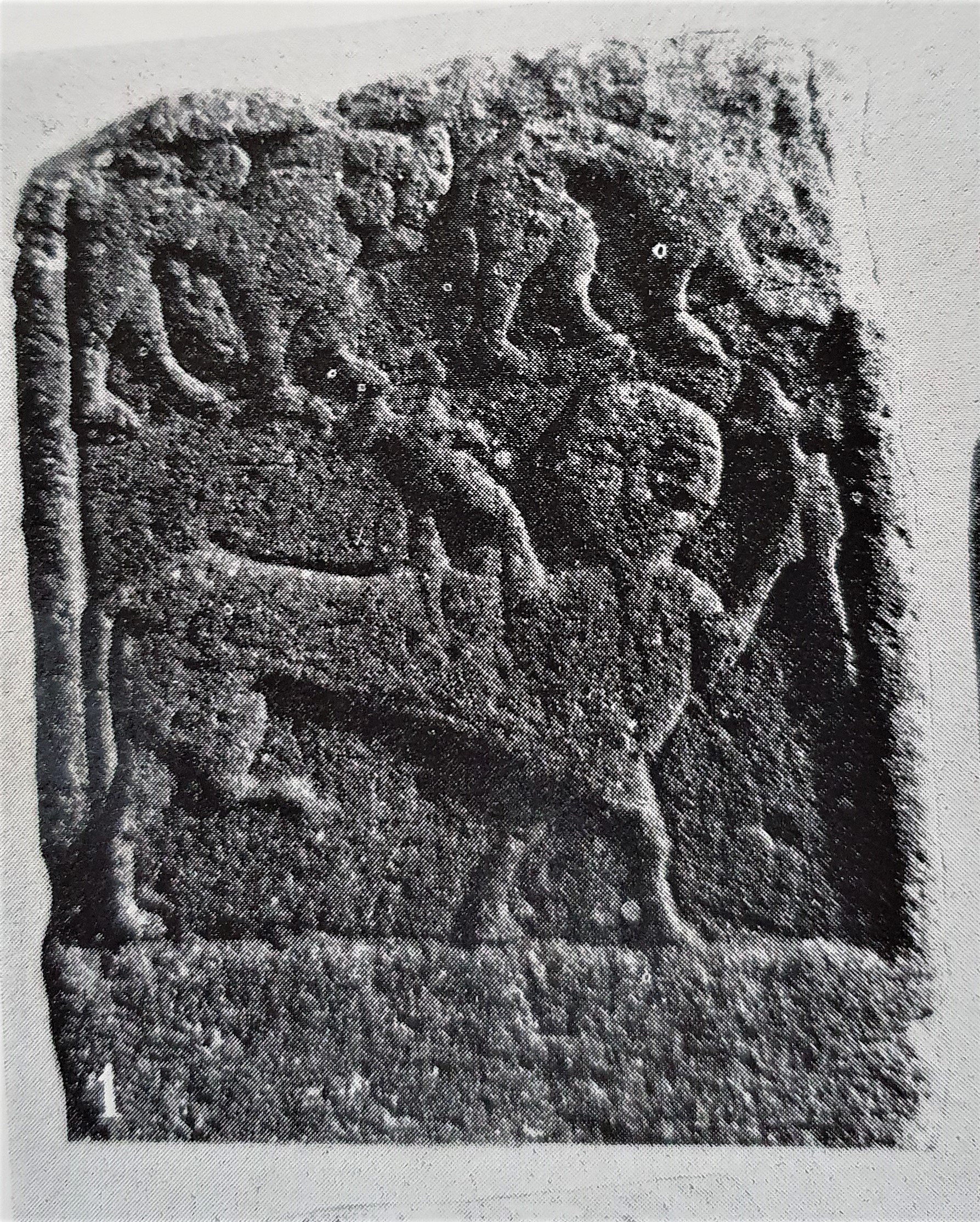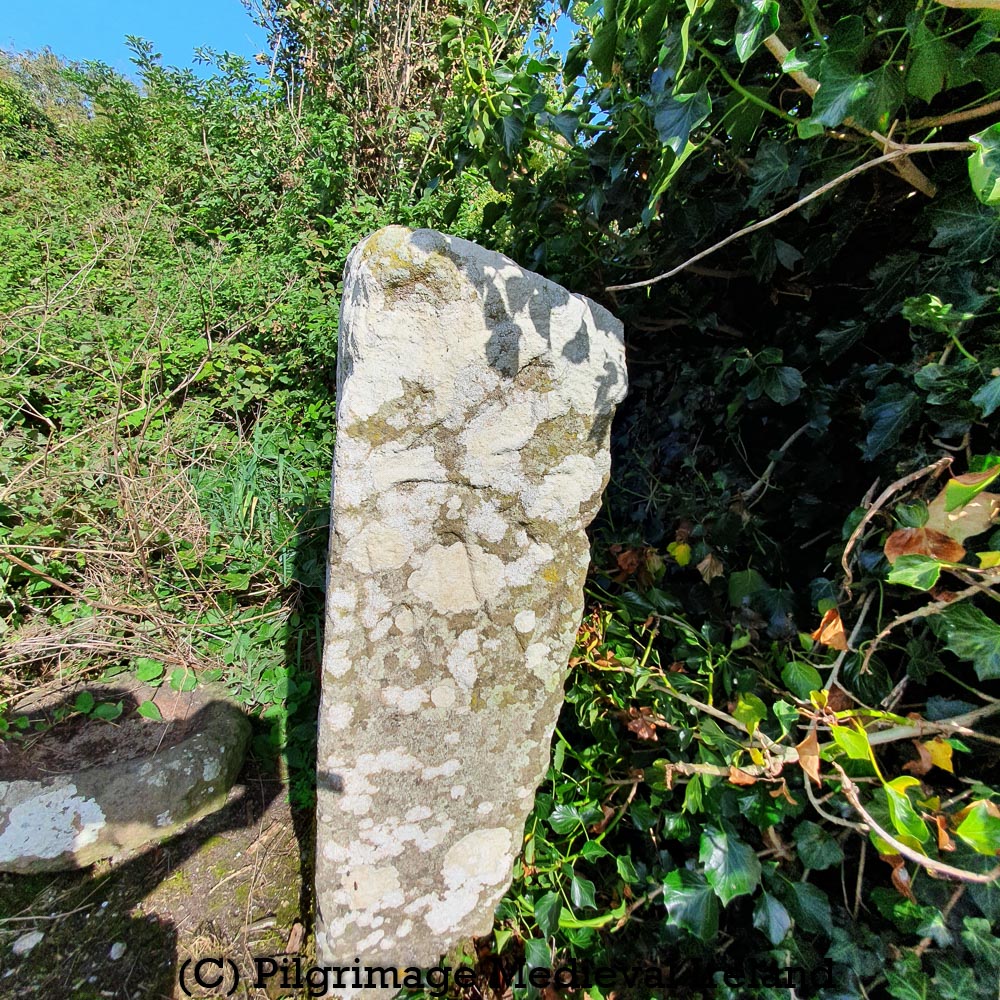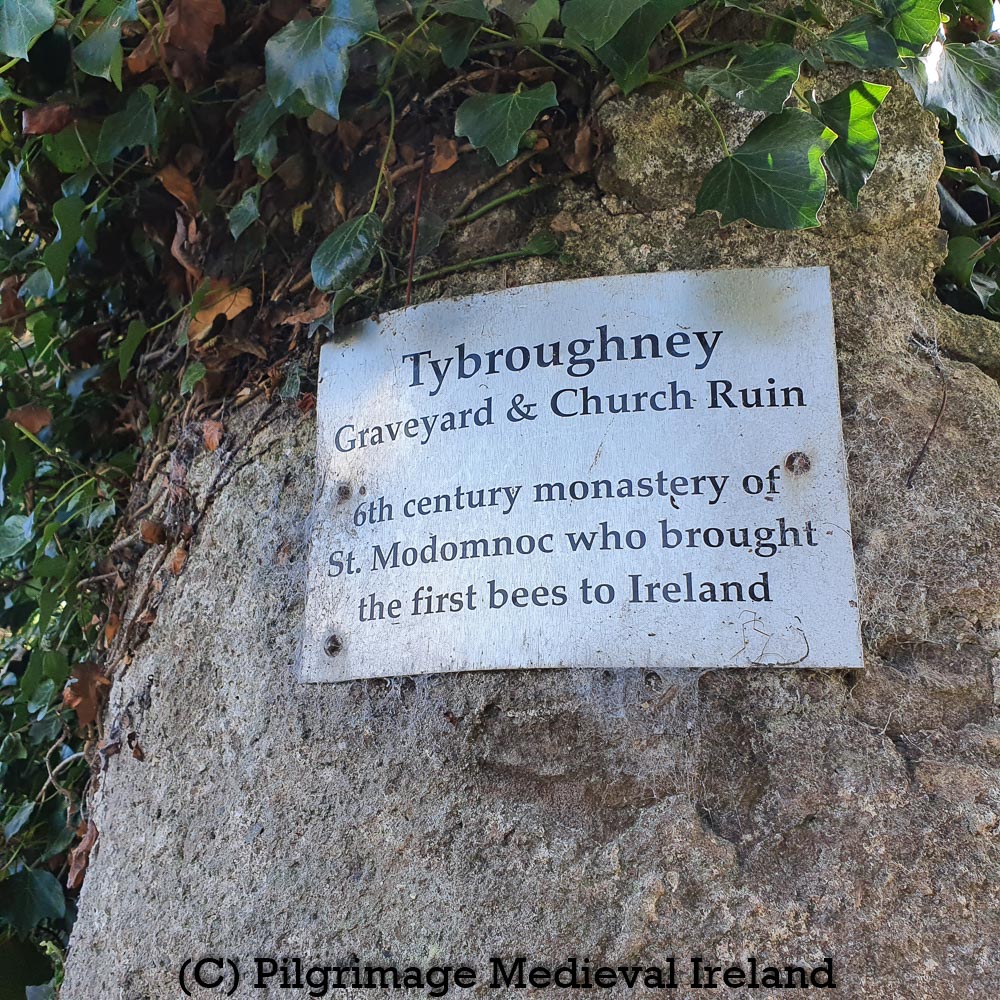The Tybroughney pillar, an early medieval pillar stone in the townland of Tybroughney/Tibberaghny, Co Kilkenny is one of the most interesting early medieval carvings in Ireland.
The townland of Tybroughney is associated with two saints. The first is St Fhachna, who is tthe patron of a holy well that gives its names to the townland. The name Tybroughney Tiobra Fhachna translates as St Fhachna’s holy well.
The second saint is St Modomnoc a hermit who founded a monastery here in the sixth century. The former monastery is said to be located at the ruins of the medieval church of Tybroughney.
Tybroughney church is located close to the site of a medieval castle and the main Waterford-Clonmel railway line. You have to cross a field to get to the church and graveyard. A fine stone gateway into the field has a plaque on commemorating St Modomoc,
Tybroughney Graveyard and Church in Ruin. 6th century monastery of St Modomnoc who brought the first bees to Ireland.
Like St Gobnait, St Modomnoc has a strong connection with bee keeping and bees.
The patron saint of Tybroughney is St Modhomhnoc. He is said to have been the first to introduce bees into Ireland. During his sojourn with St David, in Menevia, he had charge of the bees of the monastery, and attended them with the greatest care, so much that they were fruitful of honey in his hands. When he was returning thence to Ireland, and had biddin farewell to the holy abbot and monks, and had entered the coracle, to set sail, the bees, forming a large swarm came and settled in the boat along with him. Modhomhnoc, unwilling to the monastery of this treasure, brought them back to their hive. A second time, however, as he again entered the boat, they followed him, and, when he again brought them back, they repeated the same a third time. St David hearing this told him to bring the bees with him to Erin
The Schools’ Collection, Volume 0843, Page 345
The church is found beside railway gates. It is difficult to examine the church and surrounding graveyard as it is very overgrown. The 1st edition Ordnance Survey map dating to the 1840s, shows the church as a rectangular building while the later 25″map shows it as a nave and chancel church.


The Ordnance Survey Letters of Kilkenny 1839 described the church
The ruins of the church of Tiobtrait Fachtna (Note added: Tybroughney) stand in the Townland of that name and consist of Nave and Choir, the former 50 feet 8 inches by 30 feet 10 inches, the Choir 28 feet 9 inches by 18 feet 10 inches. The northern half of the west gable remains to about the height of 20 feet and half the north wall attached to it about 14 feet high, south wall and middle gable level with the ground…..The walls of the Nave are built of middle sized limestown and mortar, 2 1/2 feet think and not older I should think the 16th century, but the wall of the Choir are built of very large well formed, tho irregularly laid blocks of granite, and 3 feet 2 inches thick, very much resembling the wall of the Church of Kilcroney near Bray, in the County Wicklow.
(Herity 2003, 155).
Manning (2012, 154) describes the church as a medium-sized with antae. The west gable is still upstanding but it is very hard to say much else about the church.
Part of the graveyard that surrounds the church was destroyed in 1851 when the by railway line was built. This event was clearly remember decades later locally. The Schools Collection for Piltown School,
The railway line now runs through this old graveyard. It was constructed in 1851. When it was being made the workmen came upon a large number of human skeletons. The skeletons lay along under the surface in single file and were so close together that there were no coffins used in their interment. This shows there was an ancient monastery here or if not it was the resting place of warriors slain in some local battle.
The Schools’ Collection, Volume 0842, Page 288
The holy well which gives its name to the townland is located on the other side of the railroad tracks in scrub. I didn’t have time to search for the well on my visit here but will hopefull get back there soon. In the early nineteenth century a pattern day was held here on the13th February (Herity 2003, 157).
The Tybroughney pillar stone sits beside the church ruins, on a small patch of ground defined by low curbing. This area also contains a plain undercoated stone with an oval shaped hollow and seems to be font. There is also a rectangular stone covered in moss.
The pillar stone is decorated on all four sides with very elaborate and unusual carvings. The top of the stone appear to have been damaged in antiquity. Unfortunately my photos don’t do justice to the carving on the pillars but at different times of the day the light does brings out many of its details.





The east face face of the pillar decorated with an elaborate pattern of spirals. The pattern brings to mind spiral designs on one of the carpet pages in the beautiful Book of Durrow.


Similar spiral patterns also appear on the nearby early medieval high crosses at Ahenny Co Tipperary and Kilkieran Co Kilkenny.



The pillar was drawn in 1908 by Henry Crawford for his article ‘Description of a Carved Stone at Tybroughney, Co. Kilkenny.’ The pillar was also photographed by Helen Role for the book The High Crosses of Western Ossory.


The west face of the Tybroughney pillar has a large creature possible a centaur – a half man and half horse- holding an axe in both its hands. A centaur ‘ by his dual nature was held to symbolise the conflict between Good and Evil’ ( Roe 1962, 33).
Two smaller creatures stand above the main figure, one is a lion and the other is whippet like creature.



The southern side of the pillar closest to the railway tracks, his two mythical creatures. The lower figure is a manticora – the body of a lion and the head of a man- above the manticore is a ‘whippet-like creature’ ( Roe 1962, 33).
This may possibly be the Hyaena of the Bestiary, which scavenges in burial places and consequently was taken as a symbol of the Devil who battens the flesh of sinners.
(Roe 1962, 33)



The north face of the pillar has two figures, a stag and a lion. The stag ‘has various association, chief of which is as a symbol of Christ and his victory over Satan’ (Roe 1962, 33).



I really think this pillar would be a great candidate for photogrammetry. I hope to pay another visit here again soon to see the holy well so will keep you posted.
Bibliography
Crawford, H. (1908). Description of a Carved Stone at Tybroughney, Co. Kilkenny. The Journal of the Royal Society of Antiquaries of Ireland, 38(3), fifth series, 270-277.
Manning, Conleth. “Kilferagh, Co. Kilkenny: a Medieval Parish and Its Church.” The Journal of Irish Archaeology, vol. 21, 2012, pp. 139–156. JSTOR, http://www.jstor.org/stable/jirisarch.21.139. Accessed 10 May 2021.
O’Kelly, O. 1985. The Place-Names of County Kilkenny- The Kilkenny Archaeological Society Rothe House Kilkenny.
Roe, H. M. 1962. High Crosses of Western Ossory. Kilkenny: Kilkenny Archaeology Society,
http://www.megalithicireland.com/Tybroughney%20Pillar%20Stone,%20Kilkenny.html
https://www.kilkennypeople.ie/news/your-community/71035/Tybroughney-Castle—Bastion-of.html



